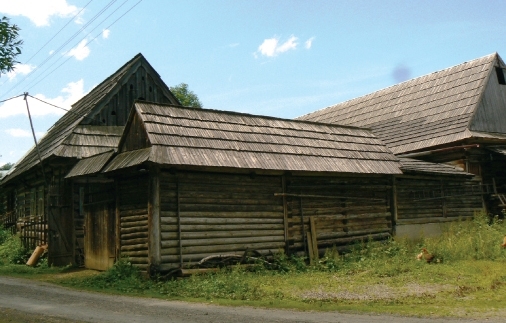Ľuba Paučulová
Shingles were popular in the Slovak rural and urban environment as late as in the 19th century. Shingle fabrication was among traditional crafts related to construction activities until the mid 20th century. The introduction of ceramic, sheet and asbestos-cement cladding almost eliminated the need for shingles.
Shingles in Slovakia have sharp edges and a groove on sides and are fitted into each other when being attached to a roof. There are, however, shingles with no sharp edges and grooves. Shingles are laid to have bottom edge of each row overlapping the previous row. This arrangement is typical for the German-speaking countries.
Handsplit shingles are water-resistant and have 30 – 40 life cycle. An 80-year shingle was reported that survived due to regularly applied motor oil paint (each 5 years). A commercial technology of sawing blocks of wood, applied widely now, diminishes the quality of a final product. Cutting plies means higher absorbing power and shorter life cycle of a shingle. Production of shingles continues to be used for renewal and maintenance of architectural style heritage. Once a classical construction element, shingles have become unique. Now, when an investor decides to use shingles, he/she is expected to bear in mind that, despite the unique style, fire hazard, higher assembly and maintenance costs and higher purchase price speak against them.
